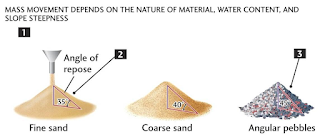Pulsatile drug delivery
Pulsatile drug delivery is a drug delivery system in which medication is released in a pulsatile or intermittent manner. This type of drug delivery is useful for drugs that need to be delivered at specific times or in response to a particular physiological signal. Pulsatile drug delivery can be achieved through various mechanisms such as osmotic pressure, pH-dependent release, and temperature-dependent release.
Some of the commonly used drugs for pulsatile drug delivery are:
Glucocorticoids: Glucocorticoids are used to treat a variety of inflammatory and autoimmune conditions. Pulsatile drug delivery of glucocorticoids is useful for conditions such as rheumatoid arthritis, where the symptoms are more pronounced in the morning. A pulsatile drug delivery system for glucocorticoids can be designed to release the medication early in the morning, when the symptoms are most severe.
Cardiovascular drugs: Pulsatile drug delivery of cardiovascular drugs is useful for conditions such as angina and hypertension, where the medication needs to be delivered at specific times to achieve optimal therapeutic effects. A pulsatile drug delivery system for cardiovascular drugs can be designed to release the medication during the day when blood pressure is highest, or at night when angina attacks are more frequent.
Anti-cancer drugs: Pulsatile drug delivery of anti-cancer drugs is useful for conditions where the medication needs to be delivered at specific times to achieve optimal therapeutic effects and minimize side effects. A pulsatile drug delivery system for anti-cancer drugs can be designed to release the medication at a specific time during the cell cycle, when the cancer cells are most vulnerable to the medication.
Hormones: Hormones, such as insulin and growth hormone, are often delivered using pulsatile drug delivery systems to mimic the natural pulsatile release of these hormones in the body. A pulsatile drug delivery system for hormones can be designed to release the medication in response to specific physiological signals, such as changes in blood glucose levels or growth hormone secretion.
Peptides: Peptides, such as luteinizing hormone-releasing hormone (LHRH) agonists, are often delivered using pulsatile drug delivery systems to achieve optimal therapeutic effects. A pulsatile drug delivery system for peptides can be designed to release the medication in a pulsatile or intermittent manner to mimic the natural pulsatile release of the peptide in the body.
The advantages of pulsatile drug delivery include improved patient compliance, reduced side effects, and improved therapeutic efficacy. For example, the use of pulsatile drug delivery for glucocorticoids can reduce the side effects associated with long-term glucocorticoid therapy, such as osteoporosis, while maintaining therapeutic efficacy.
In conclusion, pulsatile drug delivery is a useful drug delivery system for drugs that need to be delivered at specific times or in response to a particular physiological signal. Various mechanisms can be used to achieve pulsatile drug delivery, and suitable drug examples include glucocorticoids, cardiovascular drugs, anti-cancer drugs, hormones, and peptides. The use of pulsatile drug delivery can improve patient compliance, reduce side effects, and improve therapeutic efficacy.




Comments
Post a Comment